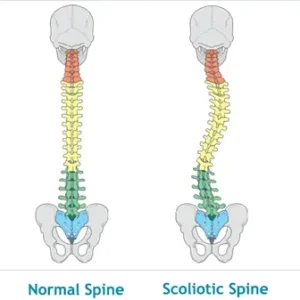Meniscal tear: Can it be treated without surgery?
(Picture from: https://blog.crossoversymmetry.com/guide-to-meniscus-tears/ )
The meniscus is two C-shaped pieces of fibrocartilage (with collagen fibers) that act as shock absorbers between your femur and tibia. The meniscus helps to transmit weight from one bone to another and plays an important role in knee stability. (1,2)
A meniscal tear can be due to injury or degeneration due to wear and tear. Some meniscal tears may just be a normal part of structural changes that go along with ageing. Annually, more than 4 million people worldwide- according to the American Orthopedic Sports Medicine Association – undergo knee arthroscopy. (3) New evidence showed that arthroscopic surgery is not more effective compared to physical therapy for some types of meniscal injuries. (4)
Let’s take them one by one.
Meniscal injuries are among the most common athletic injuries (6-7/1000 people, men are more likely to occur) and can be divided into acute or degenerative causes.(1,2) Acute injuries can happen in younger people, usually under 45 years old as a result of a combination of forces, such as loading and/or twisting the knee. Degenerative causes can usually happen in people over 45 years old as a result of ageing, and makeup about 30% of all meniscal tears.
(5,2) Activities such as ‘taking a wrong step’ or twisting to get into the car can accumulate stress on the knee over time and make the meniscus more susceptible to damage with small traumas. (6)
A meniscal tear can be clearly diagnosed by imaging (the most accurate method appears to be MRI with 93% sensitivity and 88% specificity),(7) but also, there are some quick, hands-on clinical tests that healthcare clinicians do in order to highlight a potential injury to these structures.(2) Early diagnosis and appropriate-personalised treatment play a major role in its progression. The fun fact about meniscus injuries is that 3 to 5 persons without knee pain have a tear!
For persons who have tears located on the region of the meniscus, it would likely be repaired because there is better blood flow there. Furthermore, people with known meniscal injury have accelerated cartilage wear, leading to the early onset of osteoarthritis, compared to people with no meniscal injury.(10) Studies have shown that those with a history of arthroscopic meniscectomy are 3 times more likely to get a knee replacement later in life – meaning that it is beneficial if surgery can be avoided! (11)
For the most common meniscal injuries, two main rehabilitation approaches are now recommended: exclusively conservative therapy (physiotherapy) or surgical intervention in combination with physiotherapy. The final decision of the most appropriate approach for each individual is determined after analyzing many parameters such as age, type of tear, and individual’s needs, capabilities, expectations and beliefs. For example, someone may need surgery if he has a huge tear or one that causes him the knee lock. (10)

(Picture from https://nazpta.com/physical-therapy-treatments/manual-therapy-kingman-bullhead-city-az-northern-arizona-pt/ )
According to the European Society of Sports Traumatology, Knee Surgery and Arthroscopy (ESSKA), partial meniscectomy surgeries have decreased the latest years, both for acute and degenerative meniscal injuries. This has happened because of increasing awareness of the effects of surgery in this area, such as the increased likelihood of early osteoarthritis. (12) Expert opinion and research evidence show that approximately 3 in 4 people with a degenerative meniscal injury do well with physical therapy alone, while 1 in 4 people end up in surgery due to unforeseen causes (13), physical therapy becomes a strong option of people with meniscal injury as the first line of treatment.
A physiotherapy rehabilitation program is designed based on the individual’s needs and goals and may include load modifications, interventions to reduce pain and improve range of motion, and therapeutic exercise.
Several studies have shown that, in persons who have degenerative tears, improvements in pain and function are the same whether somebody has surgery or physiotherapy. (5,4) Last but not least, even when surgery is the first treatment choice for a meniscal tear, it has great outcomes and post-operative physiotherapy is strongly recommended to get somebody back to his daily life and activities in the safest and most effective way.
Do not hesitate to seek advice and discuss your worries with your attending physician and/or physiotherapist in order to inform you further.












